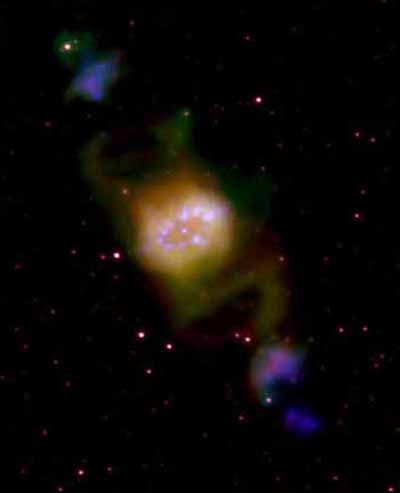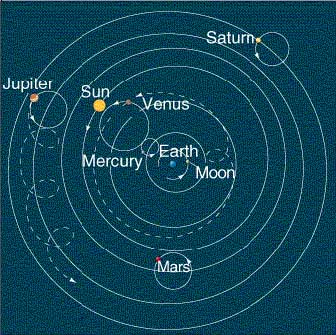

November 3, 2010
What you are looking at could easily be mistaken for a UFO, but no such luck. The round cluster of stars is known as the Necklace Nebula, found in the small constellation Sagitta. Sagitta's name is Latin for "arrow", but should not be confused with the larger constellation Sagittarius, the archer. Although ancient, it is insignificant, for it has no star brighter than the 4th magnitude and is the third smallest of all constellations (only Equuleus and Crux are smaller).
Sagitta remains one of the 88 modern constellations defined by the International Astronomical Union. Located not very far to the north of the equator, this constellation can be seen from everywhere on Earth except within the Antarctic circle. Sagitta lies within the Milky Way and is bordered by the following constellations (beginning at the north and then continuing clockwise): the little fox Vulpecula, the mythological hero Hercules, the Eagle Aquila and the Dolphin Delphinus.

The Necklace Nebula
NASA - November 3, 2010The small constellation Sagitta sports this large piece of cosmic jewelry, dubbed the Necklace Nebula. The newly discovered example of a ring-shaped planetary nebula is about 15,000 light-years distant. Its bright ring with pearls of glowing gas is half a light-year across. Planetary nebulae are created by sun-like stars in a final phase of stellar evolution.
But the Necklace Nebula's central star, near the center of a ring strongly tilted to our line of sight, has also been shown to be binary, a close system of two stars with an orbital period of just over a day. Astronomers estimating the apparent age of the ring to be around 5,000 years, also find more distant gas clouds perpendicular to the ring plane, seen here at the upper left and lower right. Those clouds were likely ejected about 5,000 years before the clouds forming the necklace. This false color image combines emission from ionized hydrogen in blue, oxygen in green, and nitrogen in red.
Sagitta was included among the 48 constellations listed by the 2nd century astronomer Ptolemy Alexandria, Egypt. In the 2nd century Ptolemy wrote the Almagest the most important source of information and the only surviving comprehensive ancient treatise on Greek astronomy. Ptolemy's model, like those of his predecessors, was geocentric and was almost universally accepted until the appearance of simpler heliocentric models during the scientific revolution.



